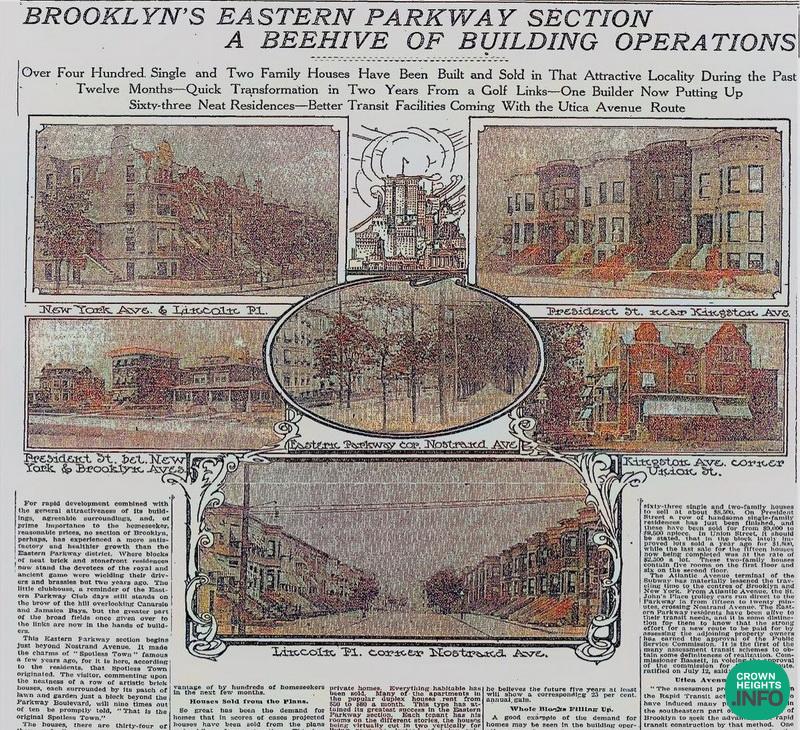
Crown Heights History: The Development and Expansion of Crown Heights in the Early 1900s
This series on The History of Crown Heights has been compiled by Instagram account @historyofcrownheights, run by a born and raised Crown Heightser, and shows some of the ongoing research taking place.
On July 31, 1910, an extensive feature article appeared in the Real Estate section of the New York Times, highlighting the rapid growth of Crown Heights, known then as the Eastern Parkway Section. The headline read “Brooklyn’s Eastern Parkway Section A Beehive of Building Operations.” The article noted the construction of 400 single and two-family houses were built in the preceding 12 months.
According to The Times, the remarkable development could be attributed to several factors. Firstly, the area boasted a row of meticulously designed brick houses that exuded artistic charm and cleanliness. In fact, it had earned the moniker “Spotless Town” at one point. Furthermore, the reasonable prices of these houses played a significant role in attracting new residents. The cost of many homes ranged from $8,500 to $16,000, with rents averaging $50 to $80 per month. However, there were also high-end residences available, priced between $25,000 and $50,000.
The pace of development further accelerated with the announcement of the upcoming construction of the Utica Avenue Subway Route (now the 3 and 4 Subway lines), a new rapid transit line.
A prominent figure in driving the growth of Crown Heights was Fredrick Rowe, a pioneering developer who had acquired the Howe Estate. This expansive plot of land, stretching from President to Montgomery Streets on New York Avenue, comprised 140 individual lots and was purchased for $250,000. Rowe later served as a congressman representing the 6th district of New York from 1915 to 1921, leaving a lasting impact on the community.
The article featured various photographs showcasing the development in Crown Heights, including images captured at notable locations such as President and Kingston, President and Brooklyn, and Union and Kingston, among others.

















Noch a chochom
You should publish all these crown heights history articles in a book. no joke
History
Absolutely! In the works… and the articles are just a glimpse in the story.